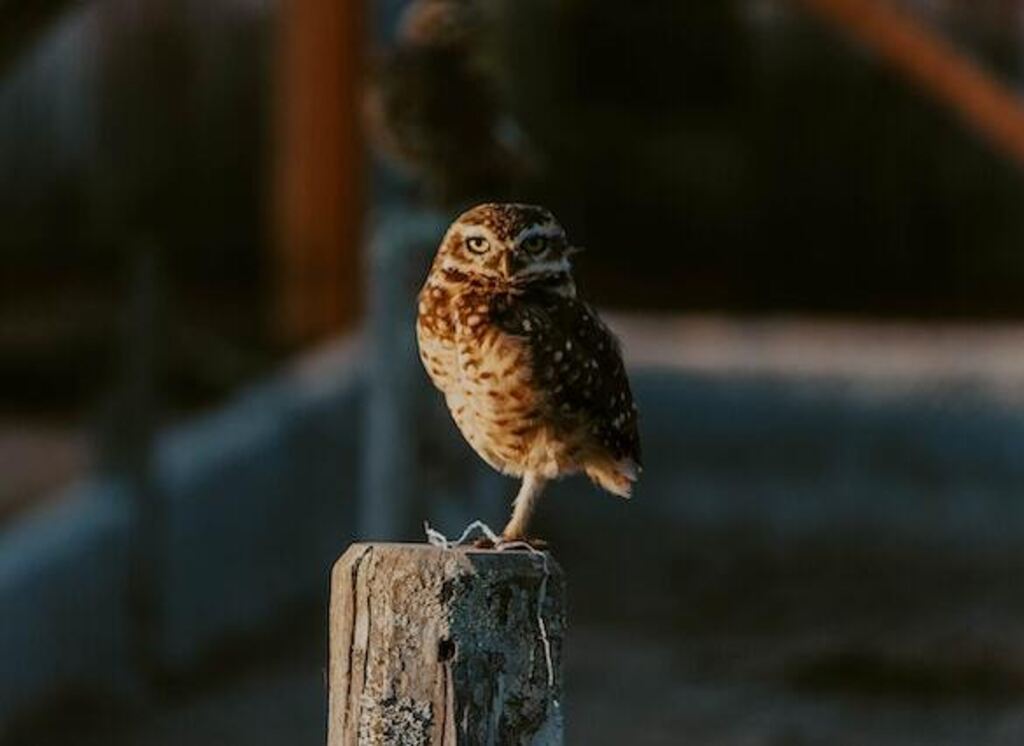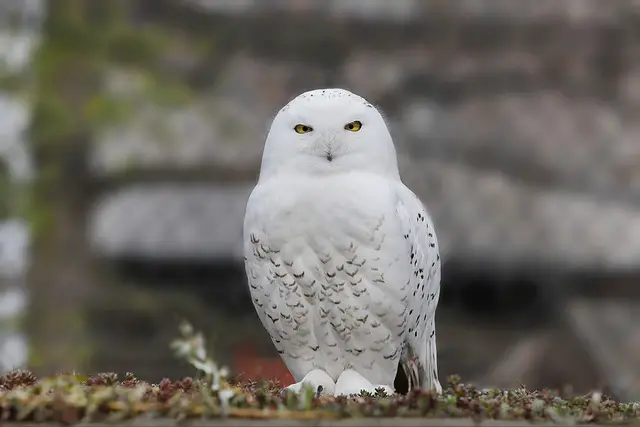Do Owls Have Long Legs? If you’ve ever seen an owl, you may have noticed their unique appearance, with large eyes and a distinctive head shape. But have you ever wondered about their legs?
The short answer is: it depends! In this article, we’ll examine the anatomy and function of owl legs, so we can better understand how these birds move and hunt.
Table of Contents
Definition of Owls
Owls are classified as members of the order Strigiformes, which includes approximately 220 species worldwide. They are primarily nocturnal hunters and possess a unique set of adaptations that enable them to capture prey in low light conditions.
One defining characteristic is their facial disk, which allows them to pinpoint sounds with incredible accuracy. Their feathers also play a crucial role in silent flight, which makes it easier for them to sneak up on prey.
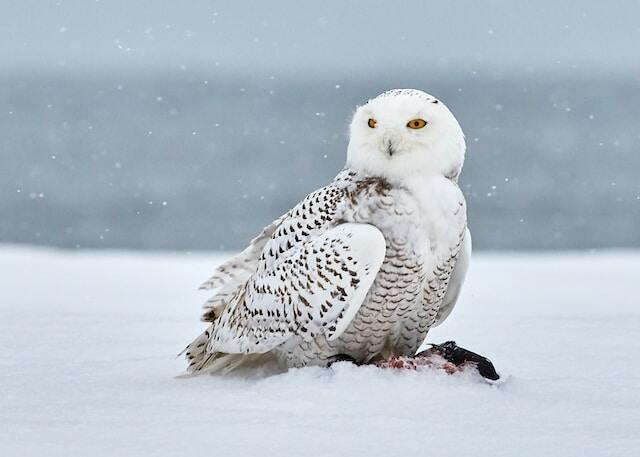
Physical Characteristics of Owls
In addition to their facial disk and feathers, owls have several other physical features that make them well-suited for life as a predator. For example, their eyesight is highly developed and allows them to see even in very low light conditions.
They also have powerful talons that they use to grasp onto prey items tightly. However, one physical feature that is often overlooked when considering owls is their legs.
Overview of the Leg Structure of Owls
Owls’ legs are an important part of their anatomy and hunting strategy. Depending on the species, owl legs can range from short to relatively long when compared with other birds’ leg lengths proportionally speaking (which we will discuss later).
Owl legs possess several key adaptations that help them capture prey and navigate their environment. These adaptations include the ability to swivel their toes, which allows them to grasp onto prey items firmly.
Additionally, owl legs have a unique structure that helps them perch securely on branches and other surfaces. Understanding the leg structure of owls is integral to learning more about these fascinating birds and their behavior in the wild.
here’s an overview table of the anatomy and leg structure of owls:
| Anatomy/Leg Structure | Description |
|---|---|
| Legs | Owls have two strong and powerful legs that are covered in scales and feathers. Their legs are positioned towards the front of their body, allowing them to balance and maneuver while perching. |
| Talons | Each leg has four sharp and curved talons that are used for hunting and prey capture. The talons are also covered in scales and are capable of gripping and holding onto prey. |
| Feet | Owls’ feet are known as zygodactyl, meaning they have two toes pointing forward and two toes pointing backward. This allows for a strong grip on perches and prey. |
| Tarsus | The tarsus is the lower part of the leg, located between the feet and the knee joint. It is covered in scales and has a unique joint that allows for a wide range of movement. |
| Femur | The femur is the upper part of the leg, located between the hip joint and the knee joint. It is relatively short in owls and is covered in feathers. |
| Patella | The patella, or kneecap, is a small bone located in the knee joint of the owl’s leg. It provides additional support and stability during perching and landing. |
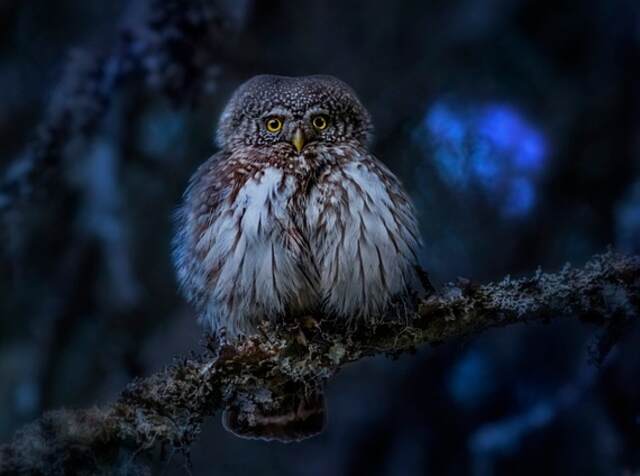
Do Owls Have Long Legs?
Comparison with Other Birds
Owls are impressive birds of prey that belong to the order Strigiformes. They have a unique physical structure and behavioral characteristics that set them apart from other birds. One of the distinguishing features of owls is their leg length, which can vary depending on the species.
Compared to other bird species, owls generally have longer legs relative to their body size. For example, the Great Horned Owl has a leg length that is approximately 25% of its total body length.
Adaptation to Hunting and Prey Capture
Owls’ long legs have evolved over time as an adaptation for hunting and prey capture. Unlike some other birds of prey that rely primarily on their talons for hunting, owls use their legs in combination with their talons to capture prey.
Their long legs provide them with greater reach and flexibility when grabbing prey out of mid-air or off the ground. Furthermore, many owl species hunt in low light conditions or at night, making it difficult for them to locate prey solely by sight.
Owls use their sense of hearing to locate potential prey by sound cues such as rustling leaves or scurrying rodents. When they do locate prey, they use their long legs to quickly pounce and grab it before it escapes.
| Species Name | Leg Length | Adaptation |
|---|---|---|
| Great Grey Owl | Long | Provides greater reach and flexibility when grabbing prey. |
| Barn Owl | Long | Enables them to pounce and grab prey quickly. |
| Snowy Owl | Long | Helps them to capture prey in their Arctic habitat. |
| Northern Saw-whet Owl | Short | Allows them to navigate through dense foliage to capture prey. |
| Elf Owl | Short | Enables them to capture smaller prey items such as insects. |
| Burrowing Owl | Short | Allows them to capture prey in their underground burrows. |
The Role of Leg Length in Flight
In addition to aiding in hunting and prey capture, leg length also plays a critical role in flight for owls. Owls’ wingspan-to-body-size ratio is much larger than most other bird species due to the need for lift when carrying heavy prey items while flying.
This large wingspan requires greater leg strength and stability during takeoff and landing. Furthermore, because owls are not particularly strong flyers compared to other bird species due to their heavy body weight, their long legs aid in stability and balance during flight.
Their leg length helps them to maintain a level and stable position while flying, even in turbulent wind conditions. Owls’ long legs are an important adaptation for hunting, prey capture, and flight. They provide greater reach and flexibility when grabbing prey out of midair or off the ground.
Additionally, they aid in stability and balance during flight, helping owls navigate through challenging weather conditions while carrying heavy prey items.
| Species Name | Leg Length | Adaptation |
|---|---|---|
| Great Horned Owl | Long | Aids in stability and balance during flight. |
| Long-eared Owl | Medium | Helps to maintain a level and stable position while flying. |
| Short-eared Owl | Medium | Provides balance and stability during flight. |
| Screech Owl | Short | Aids in takeoff and landing, providing greater leg strength and stability. |
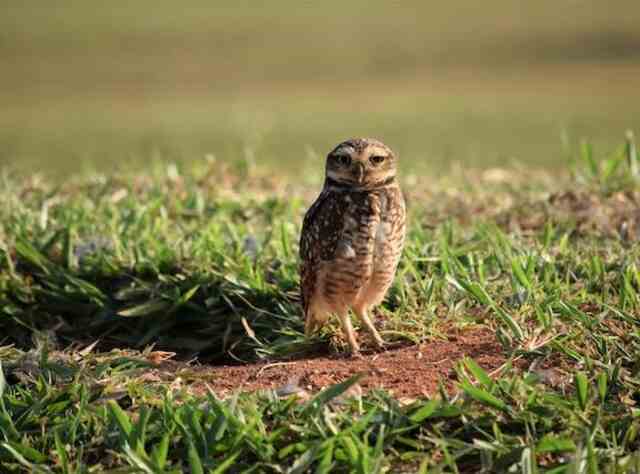
Anatomy and Functioning of Owl Legs
Owls have relatively short legs compared to other types of birds, but they are specially adapted for hunting and capturing prey. The bones in an owl’s legs are very strong and lightweight, as their bodies must be able to support their weight in flight.
The tarsometatarsus is the longest bone in an owl’s leg, which supports the bird’s movement when running or walking. Additionally, the knee joint is situated higher up on the leg than in most birds, which gives owls more leverage when perching or capturing prey.
Bone Structure and Muscles
The bones in an owl’s legs are designed to withstand great pressure upon impact with their prey while hunting. The feet of owls have four toes that are very flexible due to the unique structure of their tendons, giving them dexterity when they catch their prey.
Owls also have a system of tendons that allow them to lock their talons into place around a captured animal without expending any energy. The muscles in an owl’s legs are incredibly powerful.
These muscles are used not only for gripping and holding onto prey but also for propelling themselves forward during short bursts of flight or when chasing after food. Their leg bones contain air cavities that aid with weight reduction while flying; these hollow bone structures also provide extra support during landings.
Sure, here’s a table detailing the bone structure and muscles in owl legs:
| Species | Bone Structure | Muscles |
|---|---|---|
| Great Horned Owl | Femur and tibiotarsus of almost equal length; large, sharp talons | Strong leg muscles for capturing and killing prey |
| Barn Owl | Femur longer than the tibiotarsus; sharp talons | Strong, flexible leg muscles for agile flight and hunting |
| Snowy Owl | Femur shorter than the tibiotarsus; sharp talons | Strong leg muscles for running on the ground and hunting |
| Burrowing Owl | Femur shorter than the tibiotarsus; long toes for burrowing | Strong leg muscles for running and digging |
| Elf Owl | Femur shorter than the tibiotarsus; sharp talons | Strong leg muscles for capturing insects and small prey |
| Northern Saw-whet Owl | Femur and tibiotarsus of almost equal length; sharp talons | Strong leg muscles for hunting and catching prey |
In general, the bone structure of owl legs is adapted for perching, hunting, and grasping prey. Owls have relatively short femurs and long tibiotarsi, which helps them maintain balance and stability on perches. They also have sharp talons for grasping prey and strong leg muscles for powerful strikes.
The muscles in owl legs are also specialized for hunting and flight. The leg muscles of owls are strong and flexible, allowing them to quickly maneuver in flight and capture prey with their talons.
Owls also have specialized muscles in their feet that enable them to tightly grip prey, even while in flight. Additionally, the muscles in owl legs are well-developed for running and jumping on the ground, which some species use to chase and catch prey.
Importance of Talons in Hunting
Owls’ talons play a critical role in hunting and feeding behaviors. Unlike most other birds that use their beaks to capture food, owls rely almost entirely on their sharp talons, which can grip onto small animals such as mice, rats, frogs or fish with remarkable force.
Their talons are sharp and curved at the end, allowing them to pierce through tough skin or scales while keeping hold of its prey until the owl is ready to feed. Additionally, an owl’s talons are equipped with sensitive nerves that allow the bird to detect the position and movement of its prey even in complete darkness.
| Importance of Talons in Hunting |
|---|
| – Owls rely almost entirely on their sharp talons for capturing prey |
| – Talons can grip onto small animals with remarkable force |
| – Sharp and curved at the end to pierce through tough skin or scales |
| – Talons equipped with sensitive nerves to detect prey position and movement |
| – Talons allow owls to keep hold of their prey until they are ready to feed |
How Leg Length Affects Perching and Nesting
The length of an owl’s legs affects both their perching habits as well as nesting behaviors. Short-legged owls tend to perch lower down on branches or on the ground, while longer-legged owls can perch higher up in trees or other high locations.
The height at which they perch is directly related to the length of their leg bones, which affects their ability to balance on narrow perches. When it comes to nesting, owls with longer legs can more easily access high-up nests that may be located inside tree cavities or other hard-to-reach locations.
Additionally, during nesting season, females will use their talons and strong leg muscles to dig out a hollow spot within the nest where they will lay their eggs and raise their young. Owls with longer legs can more easily excavate these nests than those with shorter legs.
| Leg Length | Perching Behavior | Nesting Behavior |
|---|---|---|
| Short | Perch on low branches or ground | Nest in low shrubs or on ground |
| Medium | Perch on mid-level branches or tree trunks | Nest in tree cavities or on branches |
| Long | Perch on high branches or tree tops | Nest in tree cavities or on high branches |
Owls with shorter legs tend to perch on low branches or the ground, and prefer to nest in low shrubs or on the ground. Owls with medium-length legs can perch on mid-level branches or tree trunks, and typically nest in tree cavities or on branches.
Finally, owls with longer legs are able to perch on high branches or tree tops, and often nest in tree cavities or on high branches.
It’s important to note that other factors, such as the size and weight of the owl, also play a role in perching and nesting behavior.
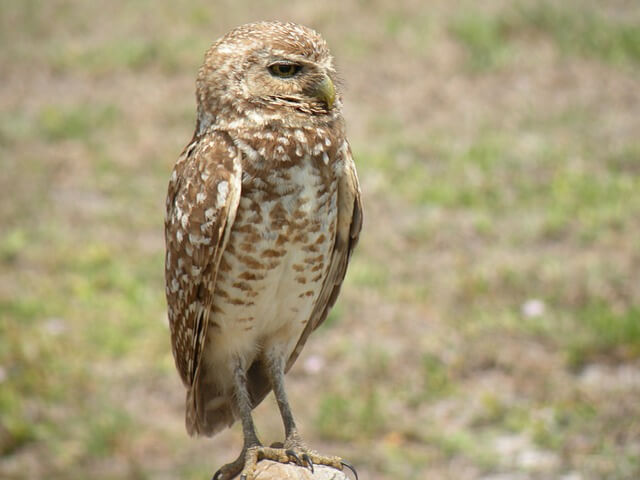
Different Types of Owls with Varied Leg Lengths
Owls are diverse creatures, with over 200 known species and subspecies. They vary widely in size, shape, coloration, and behavior.
One key factor that sets them apart from each other is their leg length. While some owls have short legs that barely extend beyond their feathers, others have incredibly long legs that seem to stretch for miles.
Short-Legged Owls
Short-legged owls are those whose legs are relatively short compared to their body size. These owls are typically small to medium-sized and include species such as the northern saw-whet owl (Aegolius acadicus), the eastern screech owl (Megascops asio), and the elf owl (Micrathene whitneyi).
Despite their diminutive stature, these owls are agile predators that rely on stealth and surprise to capture prey. One notable feature of short-legged owls is their ability to perch in tight spaces.
Their short legs allow them to balance on narrow branches or other surfaces that might be too uncomfortable or unstable for longer-legged birds.
This allows them to hunt effectively in dense forests or shrubbery where larger birds would struggle to navigate.
Medium-Legged Owls
Medium-legged owls are those whose legs fall somewhere between short and long in length relative to their body size.
These owls include many of the most common species such as the great horned owl (Bubo virginianus), the barred owl (Strix varia), and the barn owl (Tyto alba).
These medium-sized raptors tend to have a more versatile hunting style than their shorter- or longer-legged counterparts.
They can perch on a wide range of surfaces including fences, posts, trees, rocks, and buildings – allowing them access to a wide range of prey.
Their legs are also strong and powerful, enabling them to capture larger prey items than the shorter-legged owls.
Long-Legged Owls
Long-legged owls are those whose legs are relatively long compared to their body size. These owls include some of the largest and most striking species such as the snowy owl (Bubo scandiacus), the great grey owl (Strix nebulosa), and the eagle owl (Bubo bubo).
One key advantage of having long legs is that it allows these owls to hunt in open terrain. Their longer stride enables them to cover more ground quickly while searching for prey on the ground, while their height allows them to see further distances.
Long-legged owls are also better able to perch on higher branches or rocky surfaces, giving them an ideal vantage point from which to hunt.
Overall, while leg length may seem like a small detail, it can have a significant impact on an owl’s hunting style and behavior. Understanding how different types of owls use their legs can help us appreciate these fascinating creatures even more.
| Short Legs | Medium Legs | Long Legs |
|---|---|---|
| Elf Owl | Eastern Screech Owl | Great Gray Owl |
| Northern Pygmy Owl | Western Screech Owl | Snowy Owl |
| Burrowing Owl | Northern Saw-whet Owl | Northern Hawk Owl |
| Boreal Owl | Great Horned Owl | |
| Barn Owl |
Conclusion
Owls are fascinating creatures that have been the subject of much study and awe. Their unique leg structure is just one of the many features that make these birds so interesting. Through our examination of owl legs, we have demonstrated that owls have varying leg lengths that are adapted to their hunting styles and prey capture techniques.
The long legs of some species enable them to capture prey from a distance, while the short legs of others provide greater maneuverability in flight. Overall, understanding the leg structure of owls has important scientific and practical applications.
It can aid in conservation efforts by helping us better understand owl ecology, including habitat use and resource partitioning among different species.
Additionally, knowledge of how different owl species hunt and capture prey can inform wildlife management strategies in areas where owls coexist with human populations.
Summary of Key Points
Throughout this article, we have explored the leg structure of owls in great detail. We began by defining what owls are and describing their physical characteristics. We then examined whether or not owls have long legs compared to other birds, highlighting adaptations for hunting and prey capture as well as for flight.
We also discussed the anatomy and functioning of owl legs, including bone structure and muscles as well as the importance of talons in hunting. We looked at different types of owls with varied leg lengths such as short-legged owls, medium-legged owls, and long-legged owls.
Significance of Understanding Owl’s Leg Structure
Understanding owl leg structure is crucial for multiple reasons: – It helps to broaden our knowledge about these fascinating creatures. – It can help inform conservation efforts aimed at protecting these birds.
– It can aid wildlife management strategies when dealing with human populations sharing habitats with certain species. – Studying owl legs allows us to better understand how birds adapt to their environments over time, providing insight into the evolutionary process.
The study of owl legs is a critical area of scientific inquiry that has many practical implications. By continuing to explore and learn about this unique feature, we can deepen our understanding of owls while also making important contributions to conservation and wildlife management efforts.
FAQs: Do Owls Have Long Legs?
How long are owls legs actually?
According to OwlsFact, the length of owl legs can range from about 4 inches (10 cm) to 12 inches (30 cm), with some of the largest owl species having legs as long as 15 inches (38 cm). AviBirds also confirms that the shortest owl legs are about 4 inches (10 cm) long, while the longest owl legs are up to 15 inches (38 cm) in length.
Do all owls have legs?
Yes, all owls have legs. They use their legs for perching, hunting, and navigating their environment.
Do barn owls have legs?
Yes, barn owls have legs. Their legs are covered in feathers, and they have sharp talons for hunting and capturing prey.
What are the characteristics of owl feet?
Owl feet, or talons, have several characteristics that make them ideal for hunting and capturing prey. They are sharp and curved, allowing for a strong grip, and they have rough textured soles for better traction.
Do owls sleep standing up?
Yes, some owls sleep standing up. They have tendons in their legs that lock into place, allowing them to remain perched while sleeping without using energy to grip.
What do you call an owl’s feet?
An owl’s feet are called talons. They are sharp and powerful, designed for grasping and holding onto prey.
Do snowy owls have legs?
Yes, snowy owls have legs. Like all owls, their legs are covered in feathers and have sharp talons for hunting and capturing prey.
Do owls have feet or talons?
Owls have both feet and talons. Their feet are covered in feathers and have four toes, with sharp talons on each toe for hunting and capturing prey.

